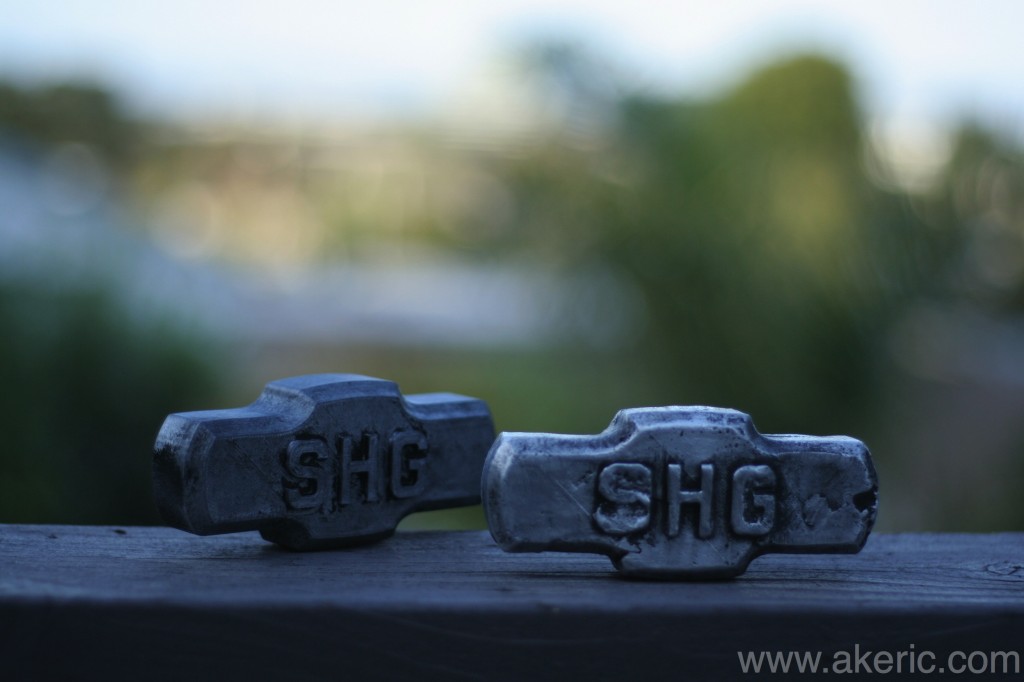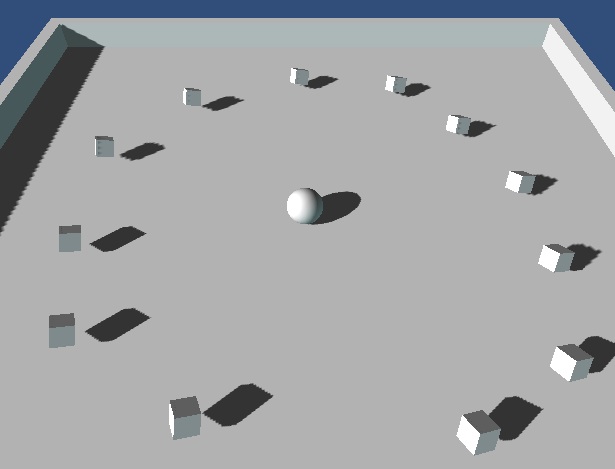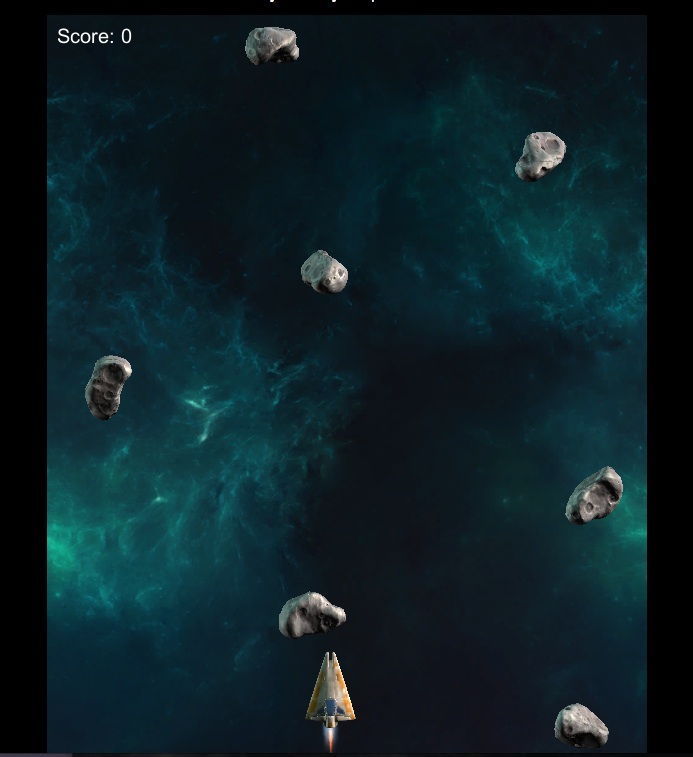CG model -> 3d printed -> metal cast: v2.0
Based on my previous post, I wanted to get better results from my sand-cast. Things I learned from last time:
- Even though I had a split mold, the vertical edges caused the mold to tear-out during removal. I have a feeling this is due to the ‘ridged’ sides the 3d-printing causes, making the walls ‘grip’ more. Because of this, I adjusted my 3d model to have slightly tapered sides.
- The extruded text on my first model suffered the same problem as the above issue. To resolve, I simply made the text extruded much less.
- The previous split mold only had one anchor point, in the middle, to join the two sides: When connected it gave more yaw-play than I wanted. The new version has two anchor points on either side.
- I watched a bunch of sand casting videos and read over multiple sites to make sure I got the sand cast itself created properly.
Based on all that, the end result turned out really nice: Sprue cut off with saws-all, imperfections ground off with an angle-grinder, and polished with a Dremel:
Here’s a shot of it freshly pulled from the cast with the sprue still connected:
And here’s a shot of the 3d-printed two-part mold. It took just under 4 hours to print on my Makerbot Replicator. 200 micron layer resolutoin, gray PLA, 220 deg C on a glass build plate covered in blue painters tape:
And finally, here’s a movie of the furnace just before it was time to pour:
I shot it with bare hands: I got really hot, really fast 😉






